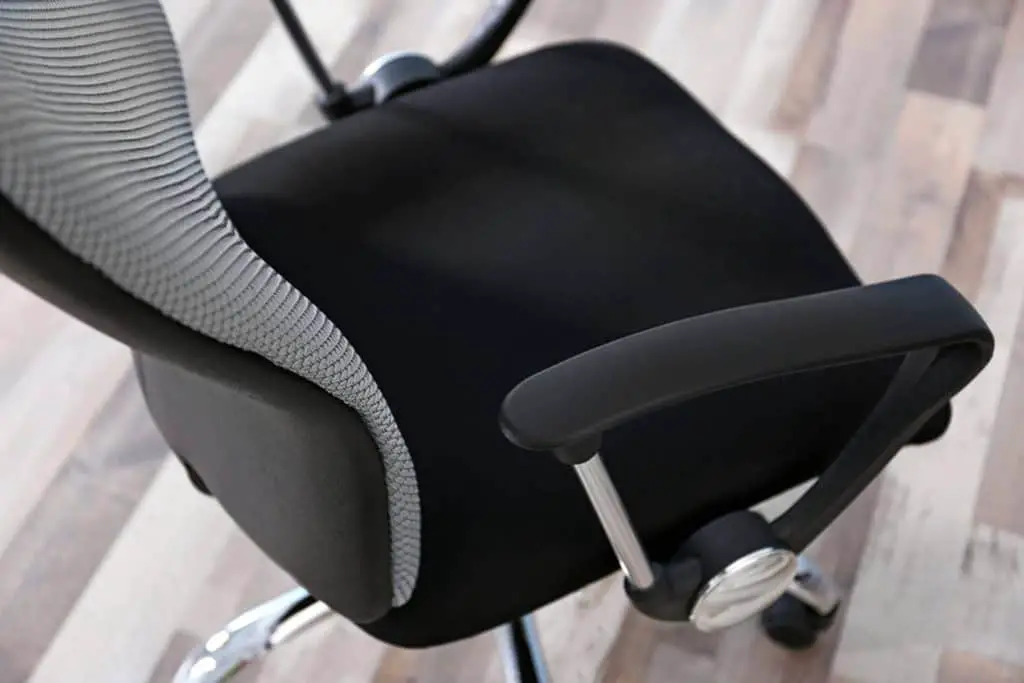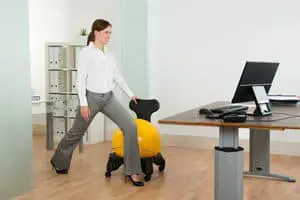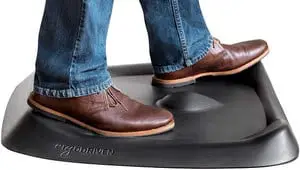Office chair armrests have been a never-ending debate topic in the world of ergonomics. Many people wonder about the impact armrests have on their productivity. Certain manufacturers believe that adjustable armrests have countless benefits, while others say armrests hinder the user from getting close to the desk.
At Office Solution Pro, we are passionate about Ergonomics! Our readers support the page. If you click on a link, we may earn a small commission at no cost to you. We hope you love the products we recommend as much as we do!
Are armrests good for ergonomics? Armrests are good for ergonomics only if they promote a neutral sitting posture for the user. This will depend on a number of factors, including the user’s body type and the size of the workstation. If the armrests prevent the user from reaching the desk easily, it’s not good for ergonomics.
With that said, all of the arguments about armrests can be addressed simply by choosing the right office chair for your body type and workspace. The question then is, what makes the best armrests in an office chair? By the end of this post, you should be able to determine the best choice for you.
What Are Office Chair Armrests?
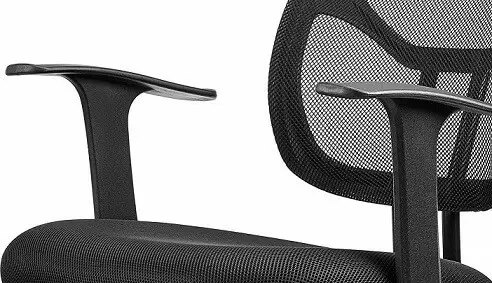
T-shaped armrests of the AmazonBasics Task Chair.
Office chair armrests are padded or upholstered arms on the side of an office chair that provide a place for your forearms to rest. Armrests are designed to relieve pressure from your wrists and shoulders, especially when working behind a computer. These are the three most common types of armrests:
- T-shaped Armrests – this type of armrest is pretty explanatory, as it’s shaped like the letter T. Most T-shaped armrests are height adjustable.
- Looped Armrests – this type of armrest forms a complete circle, either fixed or adjustable. Some options that offer a reclining feature may come with looped armrests.
- Fixed Armrests – this type of armrest doesn’t allow you to adjust it in any way. These are usually found on budget and executive-style office chairs.
Why Do Office Chairs Have Armrests?
Before the introduction of personal computers into offices in the 1980s, armrests were simple accessories equipped on chairs to support workers. As time goes by, so does the development of office furniture. The design of office chairs evolved to promote longer periods of sitting.
By the 1990s, the repetitive nature of computer work, along with the negative effects of prolonged sitting, influenced the development of ergonomic research in the workplace. This resulted in the development of adjustable office chair armrests, which help provide support for the upper body of the user.
Where Should Armrests Be?
Where should armrests be? The armrests should be positioned at the user’s natural elbow position. If the user is working in front of a computer, the armrests should help create the optimal 90-degree angle of the elbow. Doing so prevents the user from overexertion of the wrists, especially when typing.
When considering that the arms and hands comprise about 5% of the entire body mass, it becomes clear why armrests can help relieve pressure from the neck and shoulders. Studies have shown that armrests can reduce about 10% of the load on the spine and force on the hips by 50% when sitting down.
With that said, the most important consideration for maximizing the use of armrests is adjustability. As every human being is built with different body types, a regular chair can’t possibly cater to every user the same way. The more adjustable the armrests are, the more likely they will be able to promote proper ergonomics.
You might also like: Why Do Office Chairs Have 5 Legs?
What to Look for in Office Chair Armrests
According to the Journal of Physical Therapy Science, forearm support, which is often provided by properly configured armrests by top manufacturers, may reduce pain or discomfort in your neck or shoulders. Here are the things you’ll need to look out for when choosing the armrests in an office chair:
1. Adjustable Height
The best height range for armrests should be high enough to be level with your desk and low enough to go under the desk. By having the ideal height, you can easily reach your workspace and sit comfortably. Sitting too high will cause your shoulders to tense up, and too low can cause you to slouch unnaturally.
2. Adjustable Width
Because everyone has different shoulder widths, it’s important to have armrests that can be moved closer or farther from the upper body, especially if several people will be using the chair. Having your elbows directly under your shoulders is the optimal sitting position. Find an office chair that supports your neck.
3. Adjustable Length
Some ergonomic office chairs have adjustable armrests lengths. They are able to slide forward and backward to maximize your forearm position. The length of the chair should not be too long nor too short to prevent you from sitting too close to your desk. Having the luxury to switch things up can be a game-changer.
4. Pivoting Armrests
If you were to look at it from the top, an office chair that has pivoting armrests are able to be shaped inward like a “V.” Having pivoting armrests is important for anyone who has to position their wrists close to each other without the support of the desk. This can prevent you from slouching forward.
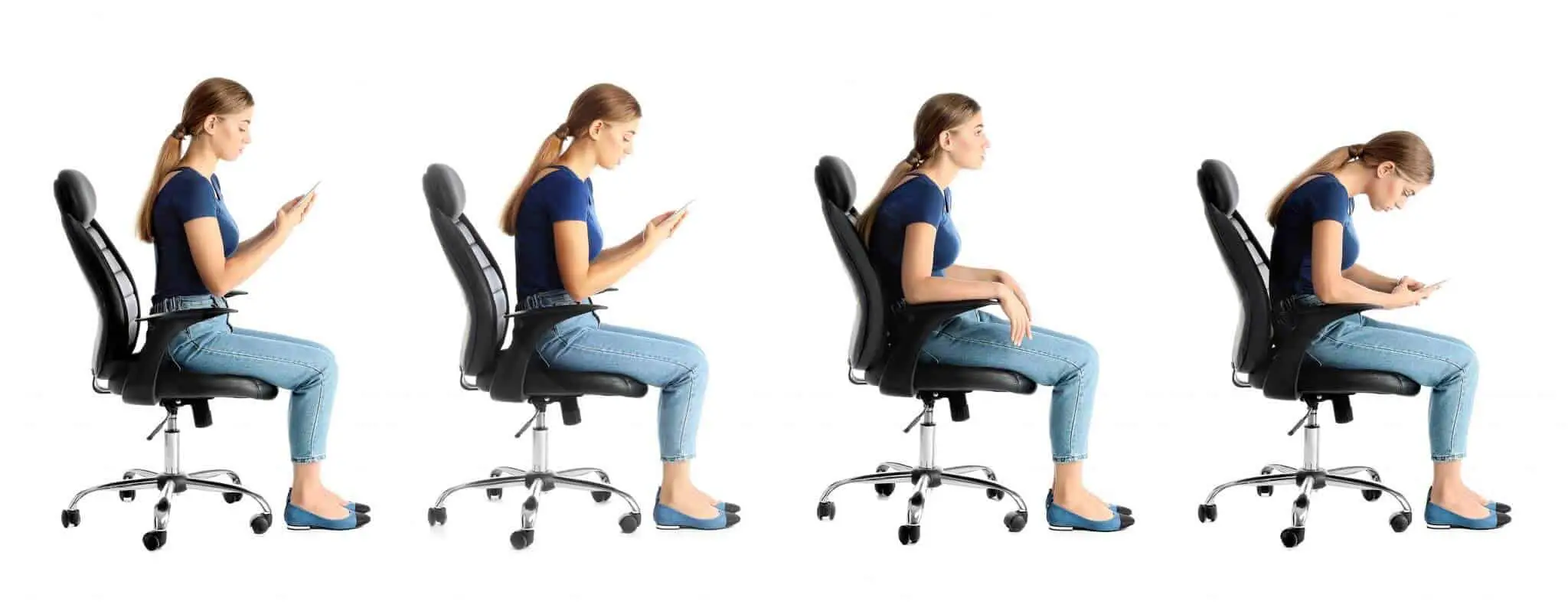
If you need to use your phone, pivoting armrests can help support your neck and shoulders.
This feature is perfect for anyone who needs to constantly check their phones and tablets. Instead of slouching and looking down on your device awkwardly, you can comfortably sit on your chair with your arms well-rested. If you need to go back to the desk, you can just slide the armrests back in its neutral position.
5. Flip-up Armrests
Last but not least, these are armrests that can be “flipped up” when not in use. Some people might prefer having armrests, while some people might not. Usually, shared office spaces are the best places to have this type of chair. It might also be suitable for tight working spaces or have a desk with low space underneath.
However, very few chairs with flip-up armrests offer any adjustability other than flipping upwards. This may be a negative from an ergonomic standpoint. Do consider this option carefully. Be sure to match the height and width of the armrests with your desk and your body.
PRO TIP: If you feel any way constricted by the armrests of your office chair, you can always consider buying an armless office chair. To help you make the best buying decision, we’ve compiled a list of the best armless office chairs that are properly designed with ergonomics in mind. Rest assured, you can work in comfort all day long.
What Does BIFMA Say?
In the 2013 Ergonomics Guideline for Furniture used in Office Work Spaces Designed for Computer Use book published by BIFMA (Business and Institutional Furniture Manufacturer Association), it states:
“Armrests can support the muscular system of the neck and shoulders and can be an aid to standing up and sitting down. For armrests with height and width adjustability, the range should cover the range from 5th percentile female to 95th percentile male of the intended user population.”
It’s safe to say that armrests can help achieve better ergonomics, only if they do not restrict the user’s natural sitting posture. By having adjustable office chair armrests, the user can choose to adjust them accordingly or simply remove the armrests altogether.
With that said, two of the best ergonomic office chairs on the planet are the Herman Miller Aeron Chair and the Steelcase Leap Chair. While both are expensive, you can expect the best ergonomics of these two. If you are keen on checking out the comparison between them, you can read it right here.
Bottom Line
Having armrests is a great way to find relief from your pain and discomfort, particularly in the arms, neck, and shoulders. By having your entire upper body relaxed, you can prevent injuries, especially when sitting for long periods of time. This will make sure that you have a pleasant day at the office every day. 🙂

Sources
- Gonçalves, J. S., Moriguchi, C. S., Takekawa, K. S., Cote Gil Coury, H. J., & Oliveira Sato, T. D. (2017). The effects of forearm support and shoulder posture on upper trapezius and anterior deltoid activity. Journal of Physical Therapy Science, 29(5), 793-798. https://doi.org/10.1589/jpts.29.793
